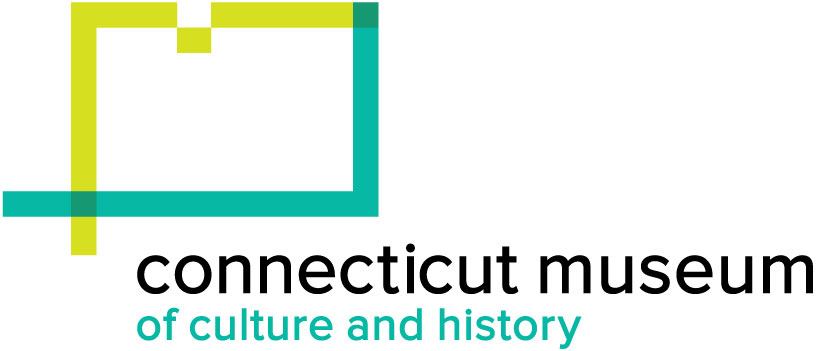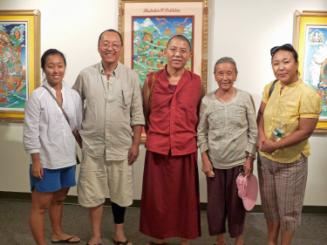Ambassadors of Folk Exhibit Gallery
Date2010-2011
Mediumborn digital video
DimensionsDuration: 1 Minutes, 10 Seconds
ClassificationsGraphics
Credit LineConnecticut Cultural Heritage Arts Program collections
CopyrightIn Copyright
Object number2015.196.274.9
DescriptionVideo showing the gallery for the exhibition, "Ambassadors of Folk: Connecticut Master Traditional Artists." Jampa Tsondue's artworks are featured in the video.
NotesSubject Note: “Ambassadors of Folk: Connecticut Master Traditional Artists” was an exhibit presented at the Institute for Community Research in Hartford, Connecticut, from June 10 through October 2010. Curated by the Connecticut Cultural Heritage Arts Program, the exhibit showcased the artistry of Connecticut folk and traditional artists who have achieved recognition on a national or international scale. The exhibit brought to wider attention the mastery of local artists who are highly respected exemplars of ethnic traditions within their communities. The eight visual artists and two performers featured represent a wide variety of artistic genres and ethnicities and share a high degree of technical skill and sophistication. The artists’ accomplishments represent entire lives spent serving their communities through cultural production. This exhibit celebrated the twenty years that the Connecticut Cultural Heritage Arts Program has worked with these and other remarkable traditional artists and their communities across the state.Artists included Aldona Saimininkas, East Hartford; Romulo Chanduvi, East Hartford; Jampa Tsondue, Old Saybrook; Eldrid Arntzen, Watertown; Paul Luniw, Terryville; Valentine and Aili Galasyn, Canterbury; Shengzhu Chen Bernardin, Torrington; Marek Czarnecki, Meriden; Fatima Vejzovic, Hartford; performers Negrura Peruana, East Hartford and Daniel Boucher, Bristol. Art forms exhibited drew from roots in Lithuania, Peru, Tibet, Norway, Ukraine, Finland, China, and Eastern Europe, but were all made and used here in Connecticut and beyond. One unifying characteristic is that these pieces have been created for use in a community’s traditional practices. For example, the Buddhist thangka paintings and the Byzantine Christian icons encourage active veneration, they serve a purpose beyond being paintings to be viewed. Other forms on display include decorative containers, cloth, commemorative pictures and rugs, wood carvings, and important seasonal decorations such as two types of dyed and etched Easter eggs. Performance traditions originate from African Peru and Québec. All of the art forms are beloved in the artists’ communities in Connecticut, where they serve as important expressions of cultural identity and heritage.
Biographical Note: Jampa Tsondue was born in 1959 just after his parents arrived in India, having left their farmland in Shigatse near Lhasa. Settling in Darjeeling, the family was visited by a monk-painter who noticed Jampa's talent. After school each day from the age of thirteen Jampa took art lessons from this teacher, Ngawang Norbu. Later Jampa moved south to Mysore to become an apprentice to this famous painter at the Gyudmed Tantric University, studying techniques of thangka painting for five years. The bond between master teacher and student can become very strong, almost familial. Jampa worked with his teacher, who also lived with the family, for the next fifteen years. Together they accepted commissions for thangka paintings, murals, and restoration of old art works. Their most important project took four painters nearly four years to complete - recreating forty-one thangkas in the Dalai Lama's collection, each 4 feet by 3 feet, depicting the past lives of the Buddha.
In 1992 Jampa was chosen by lottery to come to America with 1000 Tibetans, and he settled in Old Saybrook where he still lives. Although working and raising three children, Jampa has completed several thangkas in America although each requires a long process; he does not make them for sale. Every Tibetan has a home altar, and Jampa has created an altar in his house where his thangkas are used by his family for meditation. He has been very active in the Tibetan Association of Connecticut, a social organization that serves the nearly 500 Tibetans that have settled in Connecticut (growing from the 21 who came in 1992). Jampa participates in community gatherings to celebrate Losar, New Year, and the Dalai Lama’s birthday. In February 2007 Jampa’s paintings and drawings were on display at Wesleyan University, at the Mansfield Freeman Center for East Asian Studies, organized by Patrick Dowdey, curator and professor at the Freeman Center. Jampa also did a demonstration of thangka painting there. This was his first exhibition in many years, and his first solo exhibit. Exhibitions and demonstrations featuring Jampa’s work have taken place at Trinity College, Hartford, the Ambassadors of Folk: Connecticut Master Traditional Artists exhibit at the Institute for Community Research in Hartford, the Auspicious Signs: Tibetan Arts in New England exhibition also at ICR, an exhibit at the Connecticut Office of the Arts Gallery that celebrated 25 years of the Connecticut Cultural Heritage Arts Program, and “Passing It On” celebrating 20 years of the Southern New England Traditional Arts Apprenticeship Program, under which Jampa taught his daughter Yangchen the elements of thangka painting. In 2015 Jampa received a Folk Arts Fellowship from the CT Office of the Arts.
Additional materials exist in the CCHAP archive for this artist and this exhibit.
Cataloging Note: This project was made possible in part by the Institute of Museum and Library Services MA-245929-OMS-20.
Status
Not on view

